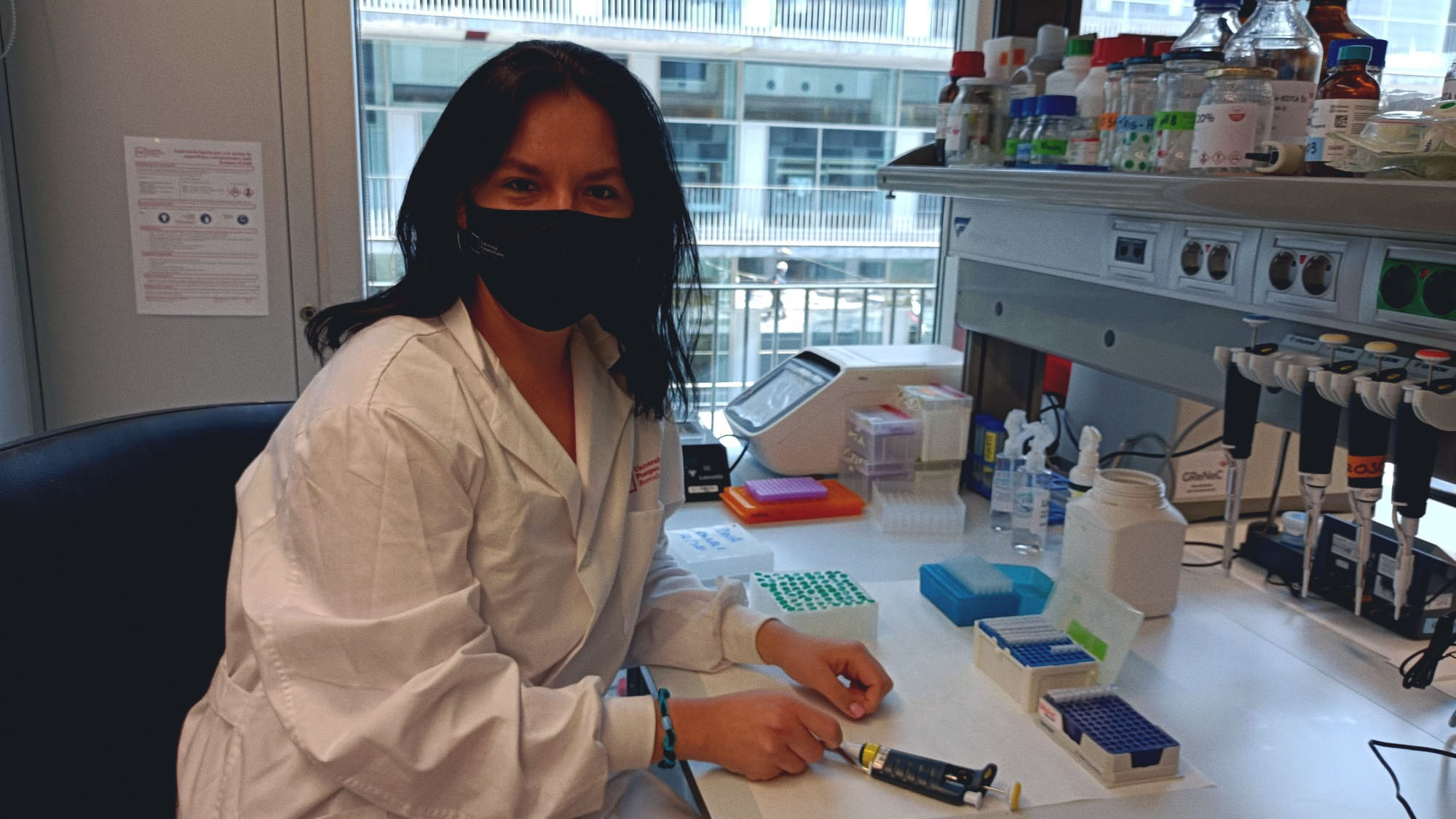June 21 is the International day for non-bias education in gender. This year we join the celebration with this reflection by Adriana Castro, doctoral student in the Neurobiology of Behaviour laboratory of the Department of Experimental and Health Sciences, Pompeu Fabra University (DCEXS-UPF), about her experience explaining her life as a scientist to a class of 3rd grade.
As a female scientist, I can say that every day I feel proud of my work and of how far I have arrived; however, February 11 is an even more special date, as the day of women and girls in science is celebrated worldwide.
This day was proclaimed in 2015 by UNESCO, to recognize and give visibility to the importance that women have in the development of science. It is sad that even today, less than 30% of scientific researchers in the world are women. Why is this?
There are many social factors that cause this inequality, known as the “scissors effect”. This scissors effect shows that as we go up in rank or leadership roles, the number of women participating in research decreases. Data from the Spanish Higher Council for Scientific Research (CSIC) report that the scientific career is started by 49.2% of female pre-doctoral students, but only 26.5% of the research professors positions are held by women.

In addition to social factors, another major cause of this inequality is that, from a young age, we tend to associate certain professions with the male or female gender. This occurs a lot in careers related to science, technology, engineering and mathematics (STEM), which are usually more associated with the male gender.
As you move up the ranks, the number of women decreases… Only 30% of all researchers in the world are women.
For this reason, it is so important to remember the importance of a gender-free education, and to encourage and motivate girls to study STEM careers. One way to achieve this is by making women who are currently scientists visible to the children.
From the lab to the classroom
Aware of this, the “La Mar Bella” school in the Poblenou neighborhood invited me to give a talk to girls and boys from the third grade of primary school to share my work.
The idea was to tell them what a neuroscientist does, how I came to do what I do, the experiments I am carrying out, why our research is important, etc. Given the circumstances, the talk had to be via videoconference. I told them that I work as a researcher at the Barcelona Biomedical Research Park (PRBB), studying the way in which all the experiences that we live in our first years of life can affect our brain and how it works. I also told them that in order to understand all this, we use an animal model, and I explained that if we use mice it is because they are genetically very similar to us and because they can learn and solve different tests when we challenge them. I was also able to explain to them the importance of having a healthy life both physically and emotionally from early childhood.
In the laboratory we use mice to study how the experiences we live during childhood can affect the brain and its functioning in the long term.
Adriana Castro (DCEXS-UPF)
In addition to my presentation, the girls and boys were able to ask me questions about science. These questions could be about whatever they wanted, not necessarily related to neuroscience. I have to say that this last part was my favorite, since I was asked quite elaborate and well thought out questions! Some examples were: Why doesn’t stomach acid burn the stomach itself? Why don’t newborns have wrinkles while older people do? How did bacteria appear in the world? Fortunately, these questions were sent to me a week in advance: for many of them, I had to search for information myself, since they were about things that, as adults, we take for granted!

They also asked some more personal questions. They asked, for example, if there were researchers in my family. I answered no, since my mother and sister are more from the political arena, and my father is an artist. It was super nice that when I answered this to them, they applauded me and said congratulations for being the first scientist in my family.
It was a wonderful experience to be in front of the expectant faces of the girls and boys, being surprised by the things I was telling them.
I can say that on a personal level it has been a wonderful experience, being there in front of the expectant faces of the girls and boys, listening to me with great attention and being surprised by the things I told them. On a professional level, it is a great challenge to be able to explain such complex issues with simple and accessible words, so that they can understand what we do and feel motivated towards science. Without a doubt, I would repeat this experience, because honestly, I don’t know who enjoyed that talk more, if the kids or myself!






